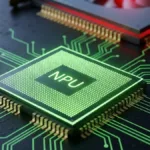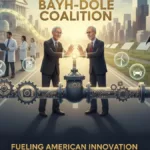In a move that signals a profound shift in corporate strategy, Intel is reportedly outsourcing a significant portion of its marketing efforts to Accenture’s AI Marketing service. This decision isn’t just about cost-cutting; it’s a recognition that the traditional marketing playbook, much like a floppy disk, is rapidly becoming obsolete. In an era where attention is the scarcest resource and algorithms dictate discovery, leveraging artificial intelligence (AI) isn’t just an option, it’s a strategic imperative. This column will explore why AI is the future of reaching individual consumers, how Intel’s marketing has evolved, the unique challenges of an “ingredient brand,” and how this partnership with Accenture could redefine Intel’s market presence.
The Digital Deluge: Why Traditional Marketing Falls Short
Remember when a full-page ad in a major magazine or a prime-time TV commercial guaranteed eyeballs? Those days are as quaint as dial-up internet. Today, large swaths of the population, particularly younger demographics, have largely abandoned traditional media. They don’t purchase and read physical newspapers or magazines, and television viewing is increasingly fragmented across streaming services, many of which are ad-free or have minimal commercial breaks. Even when ads do appear, the modern consumer’s finger is poised over the “skip” button, a testament to our collective impatience.
Furthermore, the very platforms designed to help us find information are inadvertently—or perhaps intentionally—bypassing the ads that once supported content creators. AI-based search engines and advanced browsers are becoming so adept at summarizing information and answering queries directly that users often don’t need to click through to websites, thus circumventing display advertising. It’s a bit like trying to sell a bridge when everyone’s got a personal teleportation device. In this fragmented, ad-averse landscape, the old spray-and-pray marketing tactics are about as effective as shouting into a hurricane. AI offers the precision of a laser, capable of identifying, understanding and engaging individuals on their preferred platforms with highly personalized messages.
Intel’s Marketing Odyssey: Post-Grove and Carter
Intel’s marketing history is a tale of two distinct eras. The first, arguably its golden age, was spearheaded by the visionary leadership of Andy Grove and the marketing genius of Dennis Carter. Carter, the architect of the iconic “Intel Inside” campaign, achieved what many thought impossible: he made a microchip, an invisible “ingredient,” a household name. Before “Intel Inside,” only 24% of PC buyers could name their processor brand; by 1992, that number skyrocketed to 80%. This campaign, with its memorable jingle and ubiquitous sticker, created consumer pull for a component, a feat rarely replicated.
However, since the departure of Grove and Carter, Intel has arguably struggled to recapture that marketing magic. The “Intel Inside” campaign, while legendary, became less impactful as the PC market matured and competition intensified. Subsequent efforts, while competent, often lacked the groundbreaking innovation and pervasive influence of their predecessors. The challenge grew as Intel diversified beyond just PC processors, entering data centers, AI and graphics, each requiring distinct messaging without a clear, unifying consumer brand narrative.
The Ingredient Brand Conundrum
Marketing an “ingredient brand” like Intel is inherently tricky. Unlike a consumer-facing product like a smartphone or a car, Intel’s processors are embedded within other companies’ products. Consumers don’t buy an “Intel,” they buy a “Dell with an Intel processor” or an “HP with an Intel chip.” This creates several challenges:
- Lack of Direct Control: Intel relies on its partners (PC manufacturers, server builders) to highlight its value. If a partner doesn’t emphasize the “Intel Inside” message, Intel’s brand visibility suffers. But Intel’s (and everyone else’s) MDP (Marketing Development Program) effort hasn’t worked for years, resulting in a significant loss of demand.
- Perceived Commoditization: To the average consumer, one chip might seem like any other, leading to a race to the bottom on price rather than a focus on Intel’s superior performance or features.
- Dependency on Host Brand Quality: Intel’s reputation can be inadvertently tied to the quality of the end product. A poorly performing laptop, even if it has an Intel chip, can negatively reflect on Intel’s brand.
Accenture’s AI Marketing: A New Frontier
Accenture’s AI Marketing service, particularly its “AI Refinery” platform, appears to be a robust solution designed for this new marketing reality. Accenture emphasizes using generative AI to identify new and unmet customer needs by synthesizing vast amounts of customer and market data. They claim early movers are seeing up to an 80% reduction in data processing time and a 40% improvement in speed to market with new products and services. Accenture’s AI Refinery houses 14 AI-powered agents, each modeled after key skills like research, analytics and critical thinking, allowing marketers to produce initial campaign strategy briefs in minutes instead of weeks. This capability for hyper-personalization and rapid campaign activation is precisely what Intel needs to navigate the fragmented digital landscape. Accenture’s focus on a “responsible AI framework” also addresses critical concerns around data privacy and ethical AI use.
Recommendations for Intel: Powering Up with AI
Intel’s partnership with Accenture’s AI Marketing service offers a tremendous opportunity to revitalize its brand and connect with consumers in meaningful ways:
- Hyper-Personalized Content at Scale: Leverage Accenture’s generative AI to create tailored marketing messages for specific micro-segments of consumers. Instead of broad campaigns, Intel can deliver content that resonates with a gamer, a content creator or a business professional, highlighting the specific benefits of Intel technology for their needs. This means moving beyond “Intel Inside” to “Intel for your passion.”
- Proactive Problem Solving (and PR): Use AI to monitor online conversations and social media for sentiment around Intel’s products and the devices it powers. This allows for rapid response to negative feedback or emerging issues, turning potential crises into opportunities for engagement.
- Optimize Ingredient Branding through Data: Work with Accenture to analyze vast datasets on consumer purchasing behavior and preferences for end products. This can help Intel identify which features or performance metrics, driven by Intel technology, truly influence buying decisions, allowing them to refine their “ingredient” messaging and co-marketing efforts with OEMs.
- Educate the “Invisible” Consumer: Develop AI-driven educational content that explains the importance of the processor in layman’s terms, delivered through short, engaging videos on platforms like TikTok or interactive web experiences. This addresses the commoditization challenge by making the invisible visible and valuable.
- Measure Beyond Impressions: Move beyond traditional marketing metrics. Accenture’s data capabilities should be used to track true engagement, conversion rates and brand sentiment shifts resulting from AI-driven campaigns, providing real-time ROI insights.
Wrapping Up
Intel’s decision to outsource marketing to Accenture’s AI service is a bold, necessary step into the future. The days of relying on a few iconic campaigns and broad strokes are over. In a world where everyone’s an algorithm away from their next purchase, and traditional ads are treated like a commercial break for a bathroom run, precision and personalization are paramount. By embracing Accenture’s AI capabilities, Intel has the chance to not only overcome its historical marketing challenges and the inherent difficulties of being an ingredient brand but also to forge a new, dynamic relationship with its diverse customer base. It’s about time the “brains inside” got a marketing strategy as intelligent as its products.








